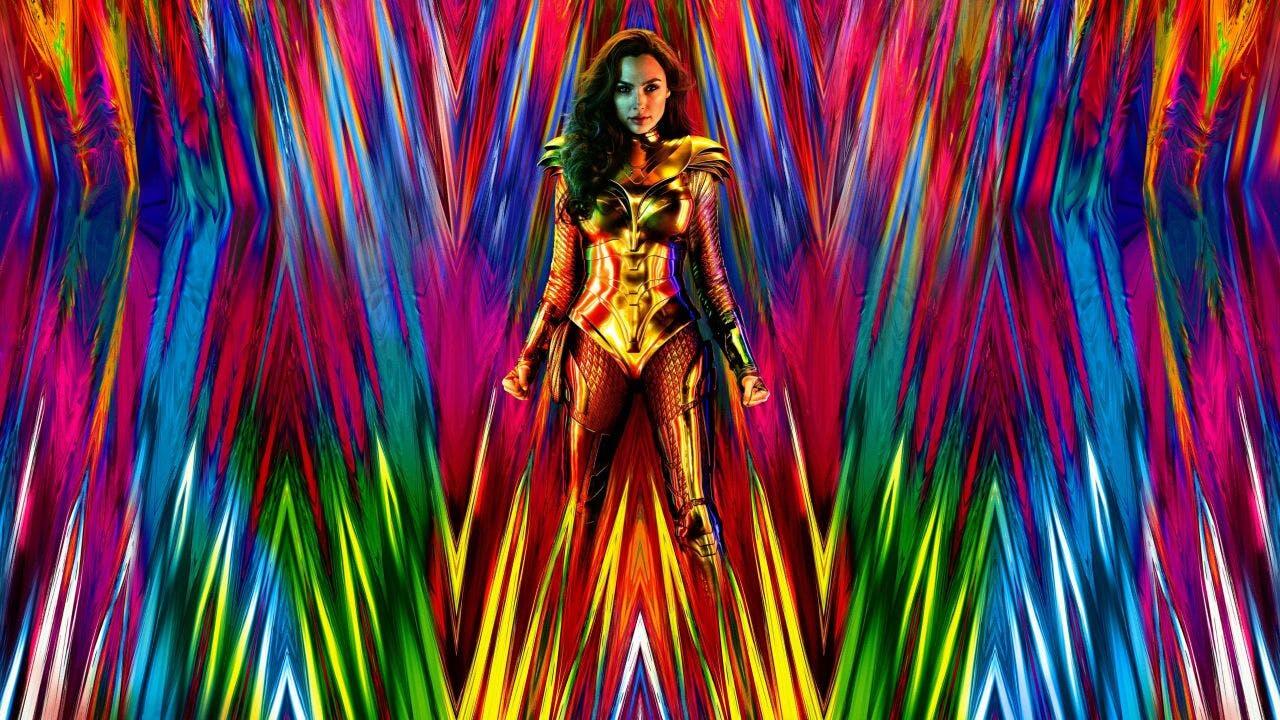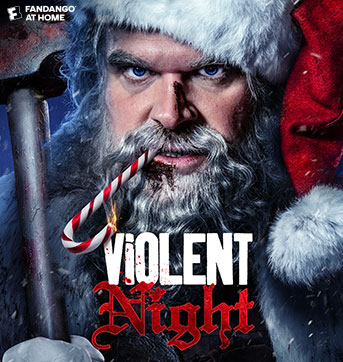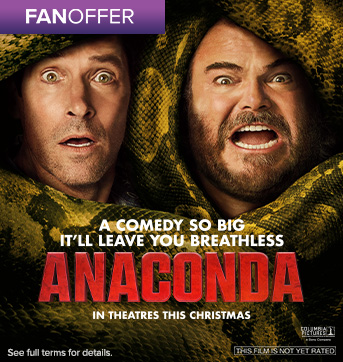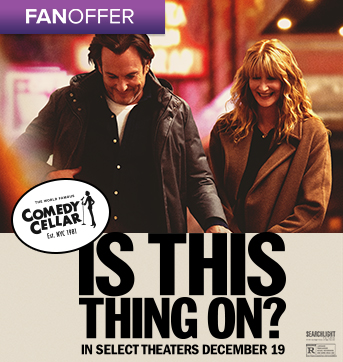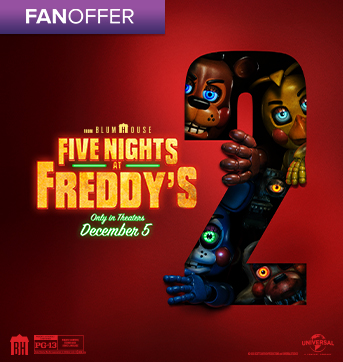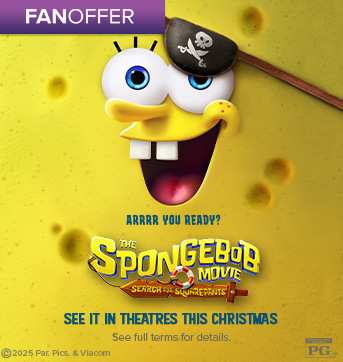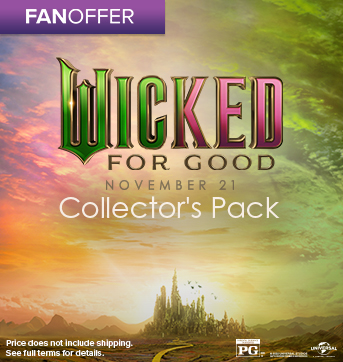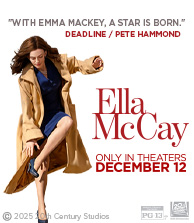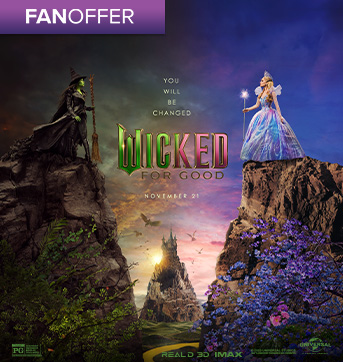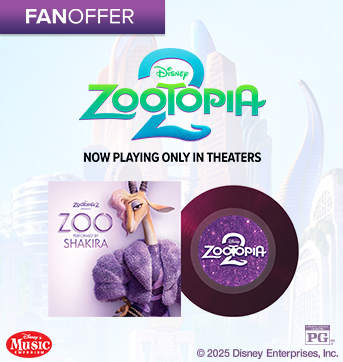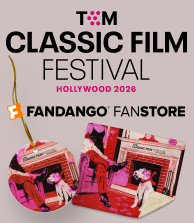
Wonder Woman battles at the mall. Steve wears a fanny pack. Big hair is all the rage and bad guys do their work via infomercials. Welcome to WW1984. Although the sequel's highly anticipated release has been pushed from summer to Christmas due to COVID-19, trust us, it will be worth the wait. And seeing as how we could all use an escape from 2020, does anything sound better than an action-packed adventure alongside Wonder Woman in the '80s? Didn't think so.
In a totally different era from which viewers last saw Diana (Gal Gadot), prepare to be in awe of vibrant neon lights and retro music bops as the superhero continues her hard work to kick butt and save humanity — 60 years later. While visiting the set across the pond in London, Fandango chatted with director Patty Jenkins, stars Gal Gadot and Chris Pine, and more key players to learn all about how ‘80s WW1984 really is and why it was the perfect decade for the next chapter of this epic tale. And if this leaves you wanting more, a brand new trailer will be revealed in a live, worldwide debut during the Wonder Woman panel in DC Fandom on August 22. So brace yourselves, because when the film finally premieres this fall, you'll find yourself amidst a much needed journey while transported back to a totally nostalgic and rockin’ time… the ‘80s.
Why 1984?
“America is at the height of its power and pride in 1984 — commercialism, wealth, glamour, technology, art, violence — everything is in excess. It’s America at its peak,” says Anna Obropta, associate producer. “The decade of greed and desire. It’s sort of humanity at its best and at its worst. It was a year of lessons learned. Lessons for a goddess warrior, lessons for all of us.” But in a time of such greed and ambition, there can also be a dark side.
At a time of striving and thriving, the ‘80s is a perfect backdrop to pose the questions: What happens if you get everything you think you deserve? What happens if all of the world’s dreams come true at the same time? For some, like Diana, it’s chaos and sadness. “We learn that Diana is slightly disengaged and a bit lonely in the world when we re-meet her as people are chasing after wealth and power and happiness,” the AP says. However, some, such as Pedro Pascal’s sleazy businessman character Maxwell Lord, seem to be the ones benefiting and perhaps helping orchestrate it all…
Max Lord’s Infomercials
Infomercials are a staple of the ‘80s — but in the DC Universe, something as simple as silly TV ads could be weaponized. According to Obropta, Pascal’s Max Lord is a “desperate, self-obsessed entrepreneur” who runs a business selling the American Dream, wealth, and power — or so people think. He’s the president of a company called Black Gold International and pounds the public with infomercial after informercial, persuading viewers to buy into his vision of how one can truly have it all.
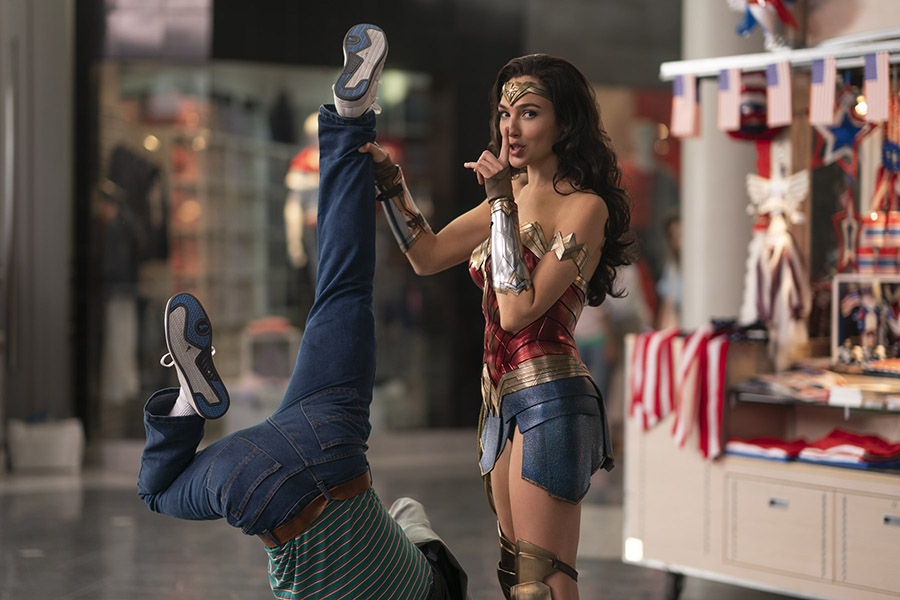
Cultural Significance and References
Patty Jenkins and her team are committed to creating this time capsule straight from the ‘80s, and perhaps not in the most conventional ways audiences typically see in films and TV. “Patty is going to have fun with the cultural backdrop, but the intention is it to not be kitsch or cliche,” says Obropta. “She’s not going for the funny, ‘haha’ version of the ‘80s. She really is trying to celebrate the best in terms of the fashion, the design, art, color, lighting of the time.”
Jenkins adds, “It’s fun to play with what you think is cool at any given time — that’s so serious at that time — and there’s good and bad that comes with it.” With that said, look out for subtle nods to classic works of the ‘80s. Jenkins calls some of Diana’s wardrobe “very Annie Hall” and Obropta says, “Patty would say she’s taking hints from Steven Spielberg, of course, the iconic master of the ‘80s.”
And, of course, there is no 1984 without a trip to the mall. In the film’s giant mall (where a battle goes down), there is a JC Penney, Spencer's, and vibrant logos and neon signs galore. But the team couldn’t divulge on any further specific ‘80s references, as producer Chuck Roven teases that doing so could reveal important “plot implications.”
The Trends
So, will the costumes in the film look like they’re straight from the ‘80s? No duh. Just being on set for a few hours, we saw extras crowding the streets donning retro wristbands and headbands, punk mohawks, bright colored pieces, printed jackets, oversized fits, big belts, glasses and padded sleeves. (Of course, they were getting touched up with clouds of hairspray for the ‘do upkeep in between takes.)
And the characters have ‘80s looks tailored to their personalities. For example, on set, Gal Gadot rocks oversized slacks with a belt around the waist and navy vest over a white button-up because she isn’t necessarily trying to stand out. (As aforementioned, very Annie Hall.) Even Diana’s white evening gown was inspired by ‘80s couture looks. Chris Pine wears Reebok slide ons with red checks, Ray Bans tucked into his white t-shirt, and a fanny pack that he jokes he keeps “treats in.” (“He came up with the idea,” says Gadot.) His look is very Stranger Things, with vintage pieces and slick sunglasses à la Rob Lowe.
Lindy Hemming, costume designer, explains how Barbara Minerva’s (Kristen Wiig) transformation is highlighted through her style. Before becoming the ruthless force that is Cheetah, she’s a bit frumpy with glasses and oversized sweaters and skirts — otherwise “a girl of the ‘80s,” following trends with ordinary clothes.
As for Pascal’s Max Lord, picture the Matthew Glave’s character Glenn from The Wedding Singer — a rich Miami look with bright colors and is expensive but has tailoring that’s not quite right. While the character “loves the idea that he’s dressed well” and “wants to be the greatest businessman in the world,” according to Hemming, his trousers are still a bit drapey. Pascal calls it an “‘80s power suit,” saying, “they fit perfectly, very comfortable, run the gamut of elegant and hideous in all the right ways.”
A Contrast with 1918
After experiencing the bleak world and backdrop of WWI in Wonder Woman, audiences are going to see the characters, and the ‘80s, through a completely new lens. “I think the ‘80s is a great setup. Everything is so poppy and fun and colorful,” says Gadot. “It blows my mind how gorgeous and alive everything is. It’s a good way to take after 1918 where everything was grimy and grey with the trenches — it’s a completely different, popping, alive, fun tone.”
And while it’s unclear how Steve comes back, the ‘80s are totally new to him when her arrives and he seems to marvel at every bit of it. “It’s not a time of war for him, it’s a time of revelation and awe,” says Pine about his character. Gadot adds, “It’s so much fun for me to see the world through Steve’s eyes. He’s so excited and he’s so fascinated by all the new things. Now she really does understand the complexities of life and what it means being a human being in this world.”
Women’s Issues
To Jenkins and her squad, the ‘80s organically became yet another period to explore societal issues — specifically, again, through Diana’s eyes. “The issues of the times — she doesn’t know about them nor care about them, so it makes it so crystal clear,” Jenkins explains about how Diana sees injustices. “There are all these things about the ‘80s that you didn’t think about. [We’re] looking back at them, and clocking, ‘Wow, those were really different then… that’s so funny that’s how we lived our lives back then.’”
Gadget adds her own take on spotlighting women’s equality issues in the ‘80s, saying, “Every decade is a decade for wonder women because — obviously there’s not equality and there hasn’t been equality in a bigger way back then, so it all depends on the era.” She compares it to Diana’s experience in the 1910’s, saying, “In the first movie, she wasn't allowed to get into the parliament building, so of course, the place where women are in the ‘80s is much better and there’s so much more freedom and opportunities.”
